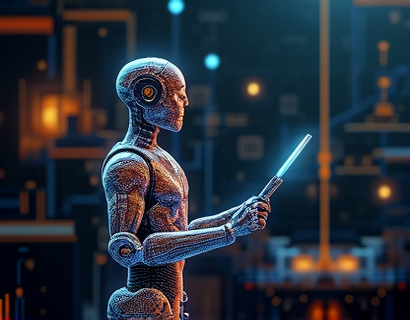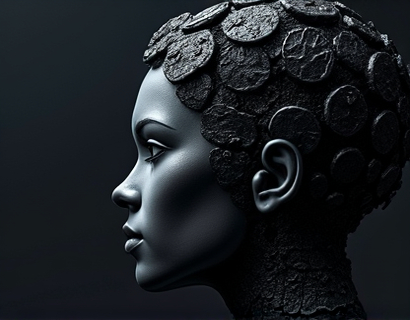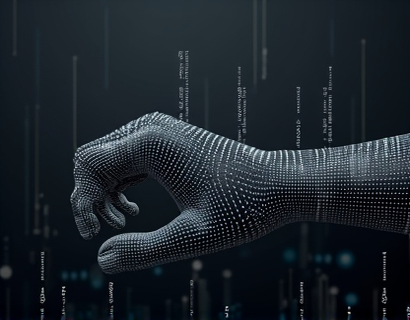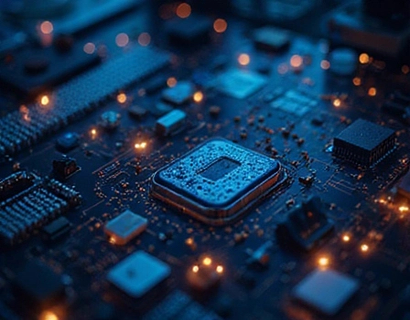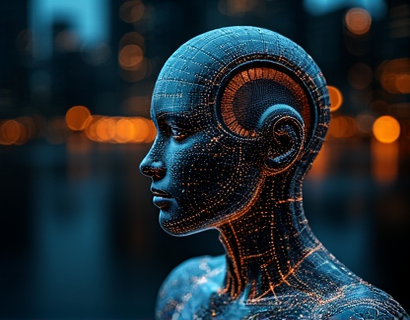Elevating Digital Experiences: The Synergy of Crypto and AI
The intersection of cryptocurrency and artificial intelligence (AI) is giving rise to a new era of digital innovation, transforming the way tech enthusiasts and early adopters engage with online platforms and applications. This merging of technologies is not just a trend but a fundamental shift in how digital experiences are crafted and consumed. By leveraging the decentralized and secure nature of cryptocurrency alongside the advanced computational capabilities of AI, developers and innovators are creating advanced solutions that enhance online presence and streamline access to cutting-edge applications.
Understanding the Basics: Cryptocurrency and AI
To fully appreciate the transformative impact of combining cryptocurrency and AI, it's essential to understand the fundamentals of each technology. Cryptocurrency, often referred to as digital or virtual currency, operates on a decentralized network known as a blockchain. This technology ensures transparency, security, and immutability, making it an ideal foundation for various applications beyond mere transactions. On the other hand, AI involves the simulation of human intelligence processes by machines, particularly computer systems. These processes include learning (the acquisition of information and rules for using it), reasoning (using rules to reach approximate or definite conclusions), and self-correction.
The Synergy of Crypto and AI
The convergence of cryptocurrency and AI creates a powerful synergy that can revolutionize digital experiences. One of the primary ways this synergy manifests is through the use of blockchain technology to enhance the security and transparency of AI systems. By recording AI model training data and outcomes on a blockchain, developers can ensure that the data is tamper-proof and the results are verifiable. This not only builds trust among users but also ensures the integrity of AI-driven decisions and predictions.
Moreover, AI can optimize the use of cryptocurrency in various ways. For instance, machine learning algorithms can analyze market trends and predict cryptocurrency price movements with greater accuracy. This predictive capability can be invaluable for investors and traders, providing them with actionable insights to make informed decisions. Additionally, AI can automate the management of cryptocurrency portfolios, adjusting asset allocations based on real-time market data and user-defined risk profiles.
Enhancing Online Presence with Crypto and AI
For tech innovators and early adopters, the combination of cryptocurrency and AI offers advanced tools to elevate their online presence. One significant application is in the realm of digital identity and authentication. By using blockchain-based identity systems, individuals can have a secure and decentralized way to manage their online identities. AI can further enhance this by providing biometric authentication methods, such as facial recognition or voice recognition, ensuring that only authorized users access sensitive information and services.
Another area where this synergy shines is in content creation and distribution. AI-driven content generation can produce high-quality, personalized content tailored to individual user preferences. When combined with cryptocurrency, this can create new monetization models where creators are rewarded in native tokens for producing and sharing valuable content. This not only incentivizes high-quality content creation but also ensures that users are rewarded for their contributions, fostering a more engaged and active community.
Streamlining Access to Innovative Applications
The integration of cryptocurrency and AI also streamlines access to innovative applications, making advanced technologies more accessible to a broader audience. One key aspect is the use of decentralized applications (dApps) built on blockchain platforms. These dApps leverage AI to provide intelligent and adaptive user experiences, from personalized recommendations to automated task management. Since dApps operate on a decentralized network, they are less susceptible to censorship and downtime, ensuring a more reliable and seamless user experience.
Furthermore, AI-powered chatbots and virtual assistants can serve as gateways to these dApps, guiding users through the onboarding process and providing real-time support. These AI-driven interfaces can handle complex interactions, from explaining the benefits of a particular application to assisting with transactions and data management. This not only lowers the barrier to entry for new users but also enhances the overall user experience by providing timely and accurate assistance.
Security and Privacy: A Dual Benefit
Security and privacy are paramount concerns in the digital age, and the combination of cryptocurrency and AI addresses these issues effectively. Blockchain's inherent security features, such as cryptographic hashing and consensus mechanisms, ensure that data is protected from unauthorized access and tampering. AI, on the other hand, can enhance security through advanced threat detection and response systems. Machine learning algorithms can identify and mitigate potential security risks in real-time, adapting to new threats as they emerge.
Privacy is another area where this synergy excels. Blockchain's decentralized nature means that user data is not stored in a single, vulnerable location. AI can further enhance privacy by implementing advanced encryption techniques and zero-knowledge proofs, allowing users to verify transactions and identities without revealing sensitive information. This dual approach ensures that users can enjoy a high level of security and privacy while using cryptocurrency and AI-driven applications.
Case Studies: Real-World Applications
To illustrate the practical benefits of combining cryptocurrency and AI, let's explore a few real-world applications. One notable example is in the field of supply chain management. By using blockchain to track the movement of goods and AI to analyze and optimize logistics, companies can achieve greater transparency and efficiency. AI algorithms can predict delays, optimize routes, and even automate paperwork, reducing costs and improving service levels. When transactions are recorded on a blockchain, all parties can verify the authenticity and integrity of the supply chain data, building trust and accountability.
Another application is in the healthcare sector, where AI-driven diagnostic tools can analyze medical data to assist doctors in making more accurate diagnoses. Cryptocurrency can play a role by enabling secure and private sharing of patient data, ensuring compliance with regulations like GDPR. AI can also manage patient records and treatment plans on a blockchain, providing a tamper-proof and accessible history for healthcare providers. This not only improves patient care but also enhances data security and privacy.
Challenges and Considerations
While the potential of merging cryptocurrency and AI is vast, there are several challenges and considerations that must be addressed. One significant challenge is the regulatory landscape. As both cryptocurrency and AI are relatively new and rapidly evolving fields, regulations are still catching up. Innovators and early adopters need to stay informed about local and international regulations to ensure compliance and avoid legal pitfalls.
Another consideration is the technical complexity involved in integrating these technologies. Developing blockchain-based AI systems requires a deep understanding of both domains, which can be a barrier for some developers. However, the growing ecosystem of tools and frameworks is making it easier to build and deploy these solutions. Collaboration between experts in cryptocurrency, AI, and software development is crucial to overcoming these technical challenges.
Future Prospects: The Next Frontier
The future of cryptocurrency and AI is bright, with numerous opportunities for further innovation and growth. One exciting area is the development of decentralized AI markets, where AI models and data can be traded and monetized in a transparent and fair manner. This could democratize access to AI technologies, allowing smaller developers and startups to compete with larger entities.
Another promising direction is the integration of AI with other emerging technologies, such as the Internet of Things (IoT) and 5G networks. This convergence can lead to smarter, more interconnected systems that leverage AI for real-time data analysis and decision-making, all powered by secure and decentralized cryptocurrency networks. The potential for creating seamless, intelligent, and secure digital experiences is immense.
In conclusion, the synergy between cryptocurrency and AI is not just a technological advancement but a transformative force that is reshaping the digital landscape. For tech innovators and early adopters, embracing this synergy can lead to enhanced online presence, streamlined access to innovative applications, and a more secure and private digital experience. As the technologies continue to evolve, the possibilities for creating advanced solutions that elevate digital engagement are limitless.











